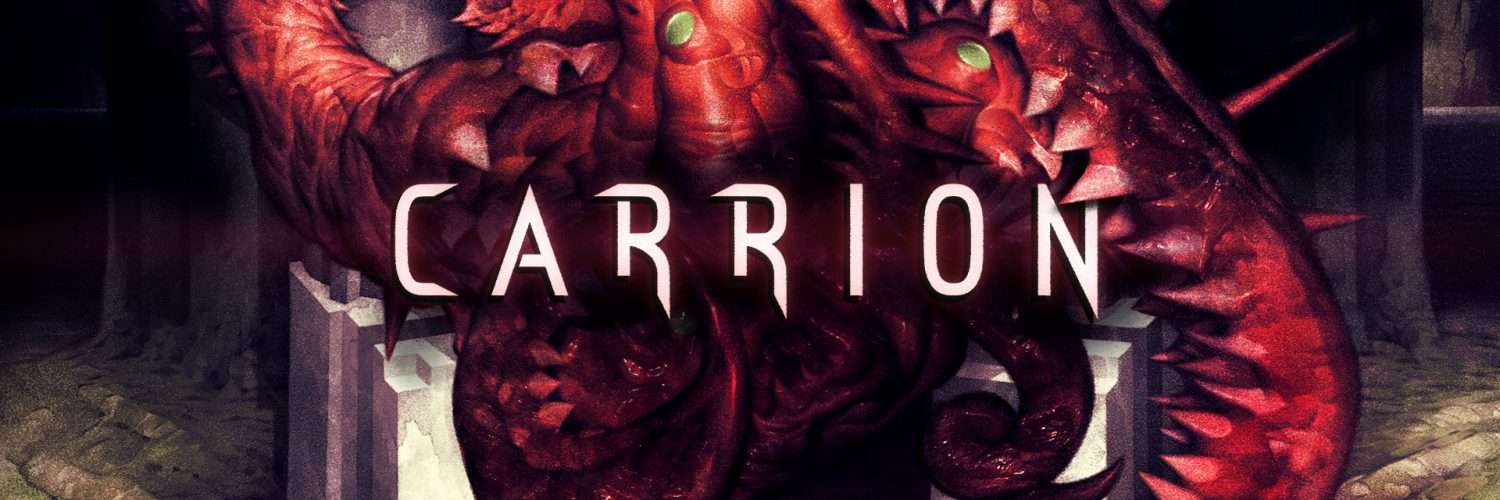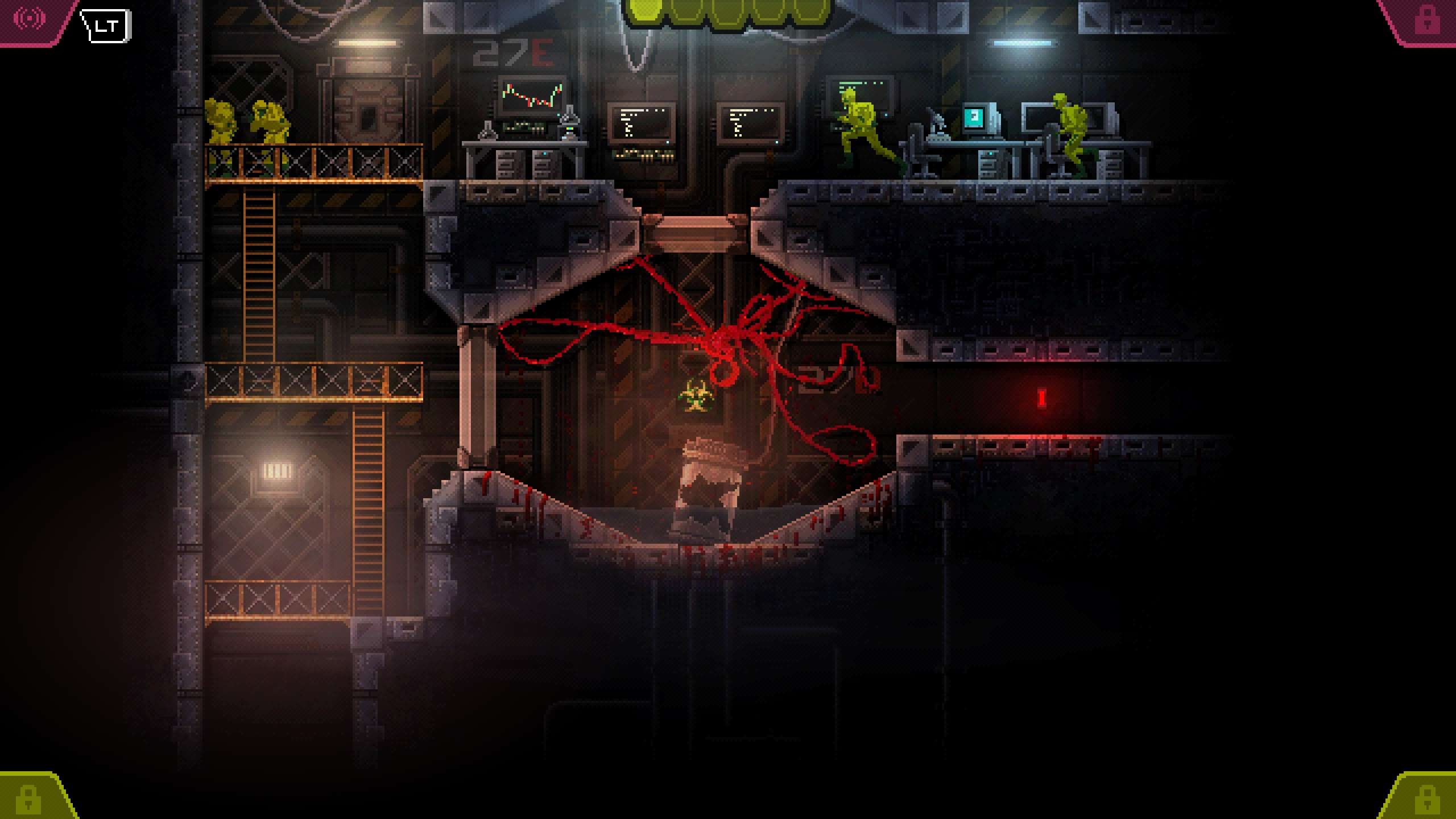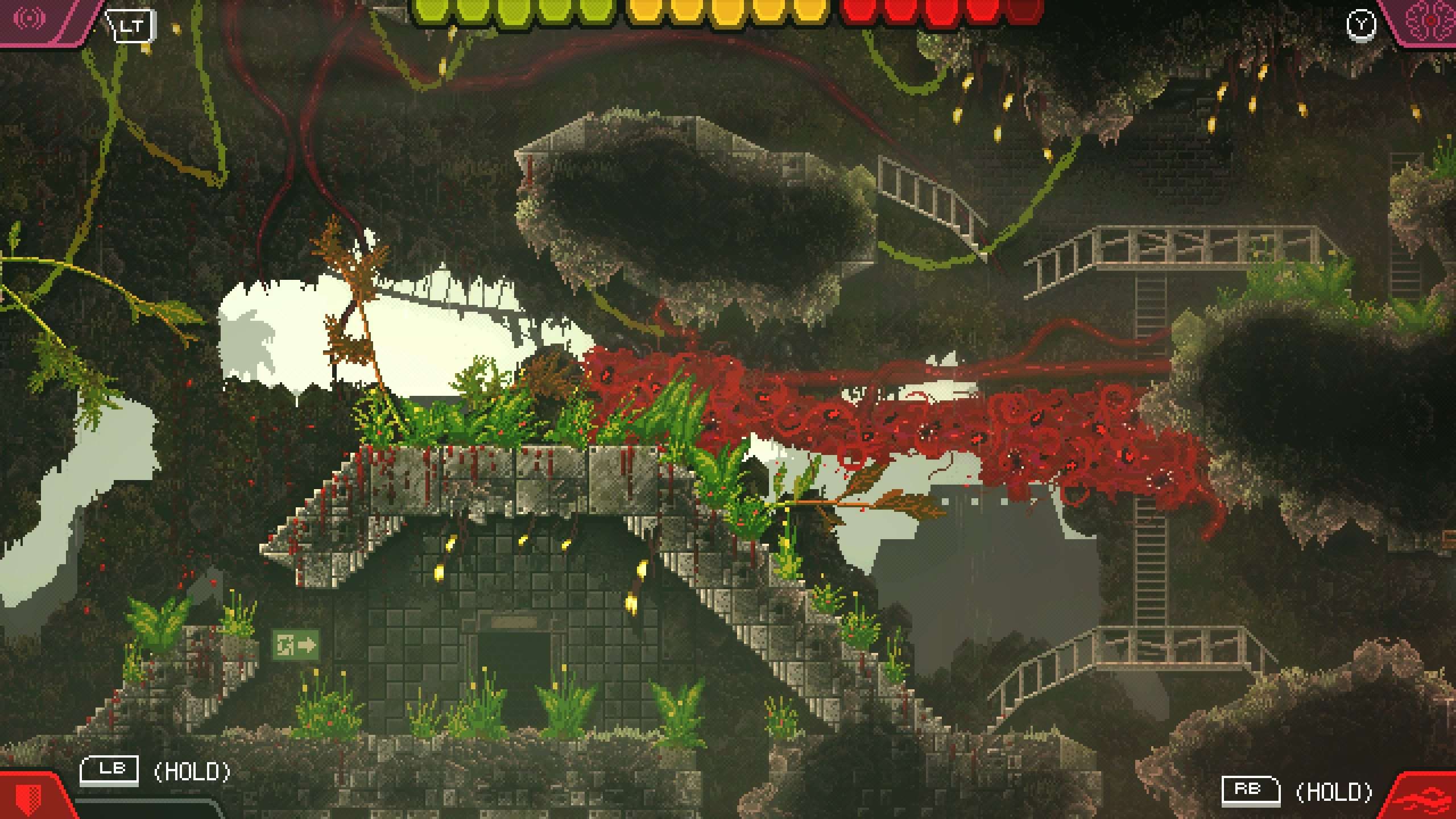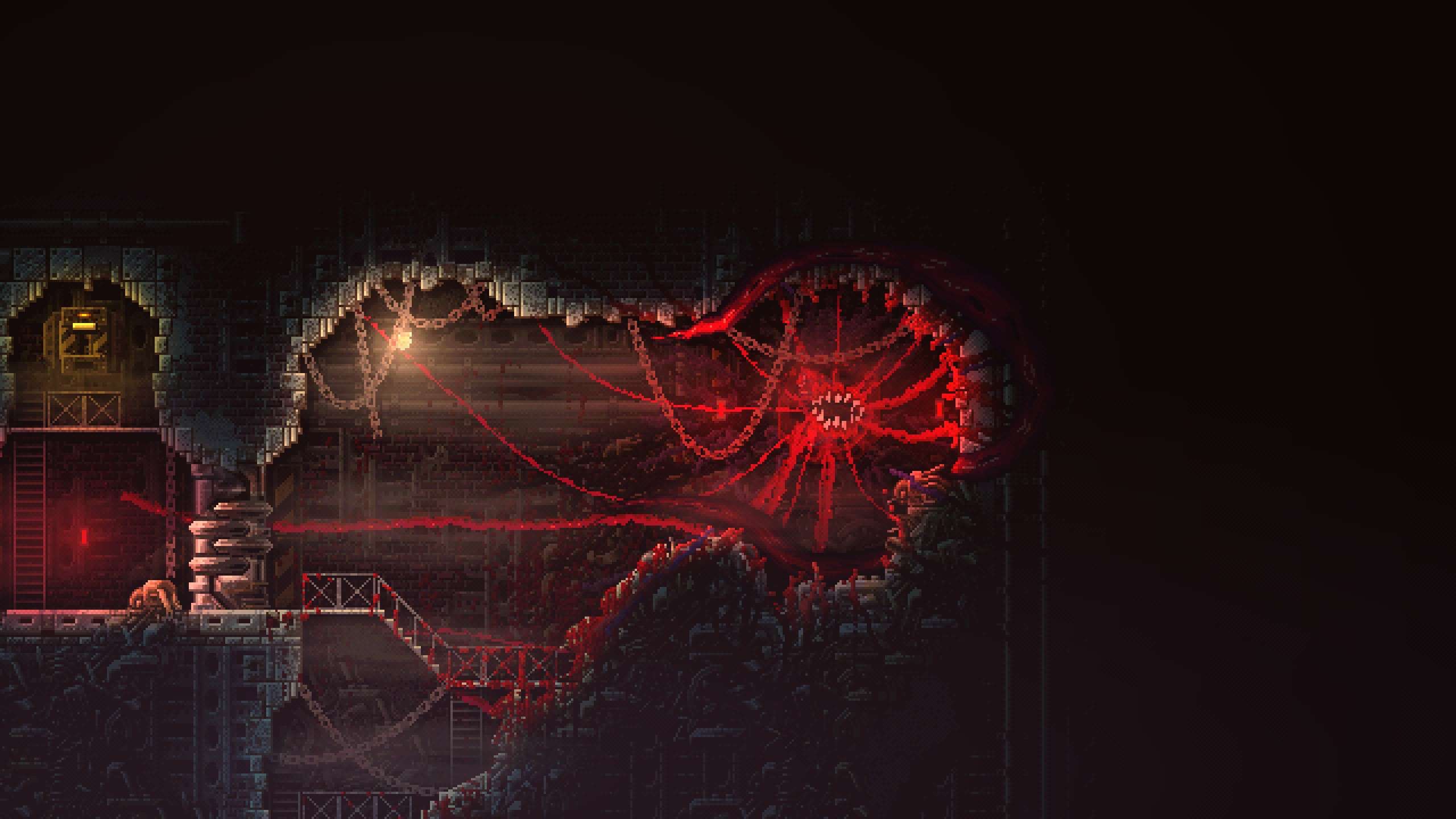
Carrion PC Review
The trailer for Carrion is possibly the most compelling snippet of marketing I have seen for a video gamey video game in recent memory. Visceral, unnerving and intriguing. I’m not big on story unless it is a genre of game that is fully committed to telling it – a point & click adventure, walking sim, visual novel or- uh… Life is Strange-like – but Carrion is simply an inherently fascinating premise. A context for your actions whose escalation is teased perfectly in that initial footage. When you throw the rules of a heroic narrative with typical good/evil morals out the window, and you feature a playable avatar whose nature and even fundamental biology is a mystery, every single thing that happens is potential surprise. That is a powerful incentive to push forward, even without a traditional, wordy storyline.

The game part of a narrative driven game may either become the narrative or get out of the way of the narrative. If you make the story the main motivation for playing a mechanics/systems heavy game, many players feel frustrated when objectives or fail states hinder their progress and the next piece of plot is dangled at the other end of an obstacle. At that point you can either lower the bar for overcoming those obstacles or make the obstacles and surmounting them into the story itself. Carrion takes from column A and column B in this regard.
The nitty gritty of playing it involves freely guiding your avatar around, using the left stick, and grabbing things in the environment by using the right stick and a shoulder button. You can eventually utilise variants of projectiles, ramming moves and other offensive abilities to deal with obstacles and threats. The game is mechanically simple and quite easy overall, relinquishing most characteristics that usually come with its chosen old school aesthetic. Rather than posing a significant challenge, the action in the game feels designed to give you a visceral sense of the monster you are controlling. Encounters offer enough friction that your steamrolling of hapless guards feels satisfying, however, and not like you are just chewing through animated pieces of the decor.

You could argue this category of games has outgrown the term a long time ago, considering it’s been over twenty years since Super Metroid and Symphony of The Night came out, and other games have been running with the template for a long time, but Carrion is best described as a “Metroidvania”. (I wonder if I could get “Doom clone” to catch on again….)
Anyway- Carrion establishes a hub, and you move into branches of that hub to clear objectives and obtain upgrades to in turn enable reaching other places from the other branches to do the same. If you are attempting a contextual and embedded narrative in a 2D setting, with a scenario that unfolds as you are piecing it together rather than as a linear storyline with structured beats, I think this is a perfect choice.
There are aspects of the game that you could describe as light puzzle elements, but they consist mainly of remembering which abilities you have gathered at that point or determining that you are missing one. I’d say the only thing that will likely impair your progress in an active way is the lack of a map, leading to more back-tracking, forward-tracking, hmm-tracking and huh?-tracking than you’d otherwise experience. Carrion’s premise does justify a level of initial disorientation, however.

Beyond its incredibly effective and exciting setup, there just is not that much more to Carrion. The game deliberately never develops into something mechanically intricate because its goal is letting you inhabit a creature whose actions are by nature sweeping and inelegant – a display of relentless unstoppable force rather than engaging with discrete attack combos or taxing platforming. In practice, that means it’s mostly a pleasant goop simulator until you run into opposition, which means waiting for enemies to turn their backs before you forcefully charge into a room like a giant, blobby Ecco The Dolphin, using your tentacles to violently and indiscriminately yank everything around.

And it is decent fun to do so, but its undeniably a shallow endeavour. It would make sense if the point is to let players inevitably reach the ending, and the appeal of it is watching the game unfold, but truth be told it never truly capitalises on its premise, which just may be too evocative and too compelling for its own good. You’d think the experience would be dense with gruesome, bewildering and deeply unsettling glimpses of its internal machinations, but it sticks closely to the devices you’ve seen in this type of context before, and comes to a rather predictable close, when all is said and done.
Carrion is remarkably successful in so far that its visuals, sound design and interaction come together to create something truly horrifying, beautiful and engrossing, but its novelty wanes, and what you are left with is surprisingly superficial. It smoothly passes through your system the same way its goopy anti-protagonist passes through corridors, and if its sole intent was to let you play the monster in an otherwise familiar scenario, with little effort required to slither across the finish line, I am honestly unsure of what its lasting appeal was supposed to be.
